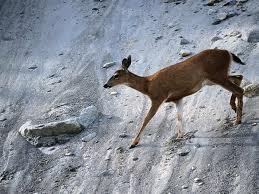We use cookies to make your experience better. To comply with the new e-Privacy directive, we need to ask for your consent to set the cookies. Learn more.
Endangered status

The main threats to musk deer have been habitat loss caused by deforestation, and the demand for musk (the secretions for the male's musk gland) for perfumes and traditional medicine. Due to its high price ($30 to $50 per gram), the use of musk in the perfume industry has declined and been replaced by synthetic musk. [1]
Ninety percent of the international musk trade is used in traditional medicine products throughout East and Southeast Asia, appearing in up to 300 patent products. With all six species of musk deer living there, China is the major source of these medicinal products, accounting for between 500 and 1000 kg of musk per year (the derived product of around 100,000 musk deer). China's population of wild musk deer (protected under China's Wild Animal Protection Law of 1998) are estimated to have fallen from three million in the 1950s to between 200,000 and 300,000 in the 1990s [3]. Outside China, illegal harvesting of musk deer in Mongolia and Russia results in the slaughter of up to five animals for each deer with a gland of sufficient size. [4]
All musk deer species are listed in either Appendix 1 or Appendix 11 of CITES. CITES has appealed to all countries which have musk deer populations to combat the illegal trade in musk and musk products [3].
1. Mending the Web of Life, Elizabeth Call, 2006.
2. www.cites.org/eng/res/all/11/E11-07.pdf
3. TRAFFIC examines musk deer farming in China.
4. 1. Mending the Web of Life, Elizabeth Call, 2006.
